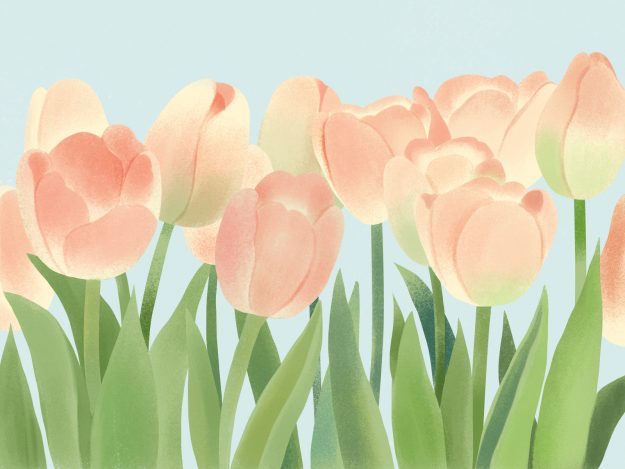
At seventeen syllables, haiku is the shortest poem in world literature. It is now also the most popular form of poetry in the world, written in nearly every language. And yet, as haiku has spread internationally, one of the most important aspects of the tradition has largely been lost—the community of poets.
In Europe and the United States, haiku is often regarded as the domain of literary elites, but this is not the case in Japan, where haiku is deeply rooted in communal activity. Millions of amateur Japanese poets belong to haiku groups (clubs, really), which are sponsored by different “schools” of haiku, each with its own magazine. Most daily and weekly newspapers carry a haiku column featuring poems submitted by their subscribers, sometimes on the front page.
To help bring back this social dimension, we are inviting our readers to participate in the monthly Tricycle Haiku Challenge. Each month, moderator Clark Strand will select three poems to be published online, one of which will appear with a brief commentary. Each quarter, one of these poems also will appear in the print magazine alongside an extended commentary. In this way, we can begin to follow the seasons together—spring, summer, fall, and winter—and share the joy of haiku together as a community.
Requirements:
Anyone can submit haiku to the monthly challenge using the form below. To be considered for publication, your haiku must:
- Be written in three lines of 5, 7, and 5 syllables:
Getting the syllables of a haiku to sit naturally inside of its seventeen-syllable form is the primary challenge. Each haiku is a word problem in search of a satisfying seventeen-syllable solution. - Contain the “season word” assigned for that month:
A haiku isn’t only a word problem. To the seventeen syllables the poet must add a turn of thought that results in more than seventeen syllables of meaning—along with a word that refers to one of the four seasons. How the poet uses “season words” like autumn sun or dew will typically determine the effectiveness of the poem.
Part of the reason haiku appeals to so many people is that its rules are simple and easy to follow, yet it can take a lifetime to master them. Ten million people currently write haiku in Japanese. There is no reason why millions can’t write haiku in English, too, provided they agree on the basics. The turn of thought you add to that simple formula of 5-7-5 syllables with a season word is entirely up to you.
Submissions close on the last day of the month at 11:59 pm ET, and the results will be posted the week after. Monthly submissions are anonymized and the winning poems are selected in a blind process.
To learn more about the history and principles of haiku, check out Clark Strand’s online course with Tricycle, “Learn to Write Haiku: Mastering the Ancient Art of Serious Play.”
This Month’s Season Word
Submit as many haiku as you please using the submission form below. Just be sure to include this month’s season word.
Spring season word: “Seashell”
moving the seashell
from one ear to the other
i become two shores
Submit as many haiku as you wish that include the season word “seashell.” Your poems must be written in three lines of 5, 7, and 5 syllables, respectively, and should focus on a single moment of time happening now.
Be straightforward in your description and try to limit your subject matter. Haiku are nearly always better when they don’t have too many ideas or images. So make your focus the season word* and try to stay close to that.
*REMEMBER: To qualify for the challenge, your haiku must be written in 5-7-5 syllables and include the word “seashell.”
Haiku Tip: Explore the Range of English Language Haiku!
The first writers to produce haiku in English were established poets who knew what they were doing—if not with haiku, then at least with poetry. But they weren’t going at it blindly. They understood the basics of the form, the value of juxtaposing images, and the importance of focusing on subjects drawn from nature, often from the four seasons. For the rest, they followed their own inclinations.
Poets like Amy Lowell (1874–-1925) were more interested in what could be done with the haiku form in English than they were in mastering the styles and techniques of Japanese poetry. As a result, they experimented freely, writing haiku that—even today—seem fresher than those produced by poets who write for the magazines devoted to haiku in English today.
Two of Lowell’s haiku:
As a river-wind
Hurling clouds at a bright moon,
So am I to you.
In terms of genre, this is a love poem. But its technique, the heroic simile, comes straight from Homer. A Japanese poet would never dream of writing a verse like this, but there it is—a haiku that draws on a Western poetic tradition going back thousands of years.
Love is a game — yes?
I think it is a drowning:
Black willows and stars.
This is also a love poem, but a plaintive one. In the Western literary canon, it belongs to the genre of “lover’s laments.”
Both poems were written in 5-7-5 syllables. And both contain season words—“moon” for autumn and “willow” for spring. But neither is in the least derivative of Japanese poetry. Lowell was a feminist, a lesbian, and a giant of the Imagist movement that gave birth to modern English language poetry. When she used the haiku form, it was because she had something to say in it, not because she wanted to produce a poem that would satisfy a specialist in Japanese literature. She was a poet using the haiku form to produce good literature in English. In that respect, she was a hundred years ahead of her time.
A note on seashells: Traditionally, seashells belong to the animal category for springtime in haiku, although the animals who inhabited them are usually gone by the time they wash up on the shore. Because those animals adapted to a wide variety of conditions over millions of years, their shells are varied too. Some are flat, others round or spiral in shape. They vary in size as well—from micromollusks to giant clams. Gathering shells is a favorite spring pastime in Japan. In North America, it extends into the summer months as families begin vacationing at the shore. Any haiku including the word “seashell” is acceptable for this month’s challenge, although “shell” may be used alone, provided the meaning is clear.
March’s Winning Poem:
Spring season word: “Tulip”
life is a tulip
opened to the elements
tilting in the wind
—Renee Cassese

You can find the honorable mentions, additional commentary, and March’s haiku tips here.
Previous Winners
|
2021 |
2022 |
2023 |
|
2024 |
2025 |
|
January |
|
|
February |
|
|
March |
|
|
April |
April |
|
May |
May |
|
June |
June |
|
July |
July |
|
August |
August |
|
September |
September |
|
October |
October |
|
November |
November |
|
December |
December |
♦
